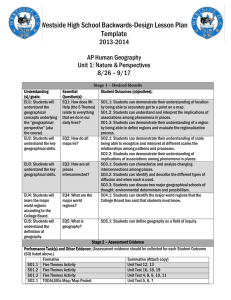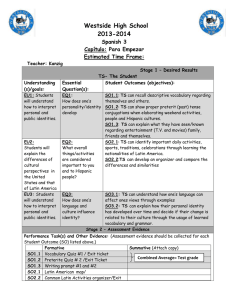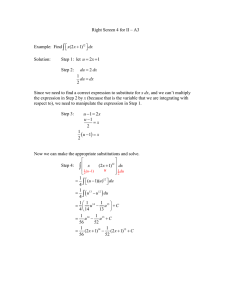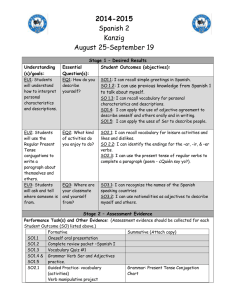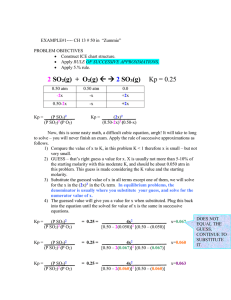UNIT 2 WEEK 4 LESSON PLANS
advertisement
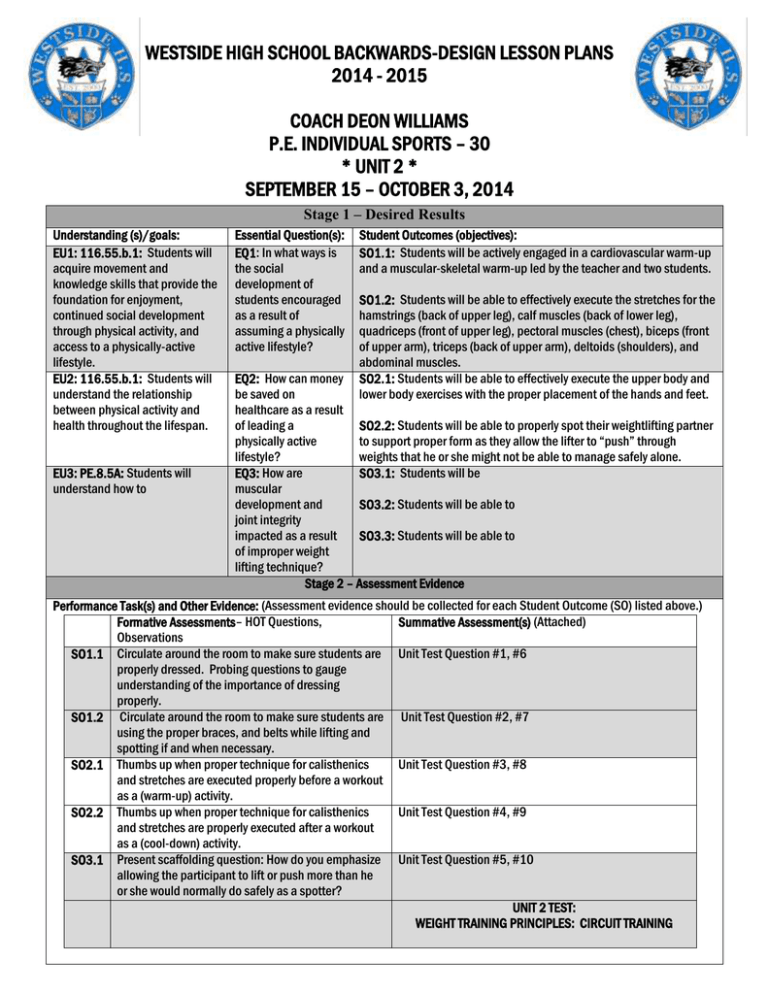
WESTSIDE HIGH SCHOOL BACKWARDS-DESIGN LESSON PLANS 2014 - 2015 COACH DEON WILLIAMS P.E. INDIVIDUAL SPORTS – 30 * UNIT 2 * SEPTEMBER 15 – OCTOBER 3, 2014 Stage 1 – Desired Results Understanding (s)/goals: EU1: 116.55.b.1: Students will acquire movement and knowledge skills that provide the foundation for enjoyment, continued social development through physical activity, and access to a physically-active lifestyle. EU2: 116.55.b.1: Students will understand the relationship between physical activity and health throughout the lifespan. EU3: PE.8.5A: Students will understand how to Essential Question(s): EQ1: In what ways is the social development of students encouraged as a result of assuming a physically active lifestyle? Student Outcomes (objectives): SO1.1: Students will be actively engaged in a cardiovascular warm-up and a muscular-skeletal warm-up led by the teacher and two students. SO1.2: Students will be able to effectively execute the stretches for the hamstrings (back of upper leg), calf muscles (back of lower leg), quadriceps (front of upper leg), pectoral muscles (chest), biceps (front of upper arm), triceps (back of upper arm), deltoids (shoulders), and abdominal muscles. SO2.1: Students will be able to effectively execute the upper body and lower body exercises with the proper placement of the hands and feet. EQ2: How can money be saved on healthcare as a result of leading a SO2.2: Students will be able to properly spot their weightlifting partner physically active to support proper form as they allow the lifter to “push” through lifestyle? weights that he or she might not be able to manage safely alone. EQ3: How are SO3.1: Students will be muscular development and SO3.2: Students will be able to joint integrity impacted as a result SO3.3: Students will be able to of improper weight lifting technique? Stage 2 – Assessment Evidence Performance Task(s) and Other Evidence: (Assessment evidence should be collected for each Student Outcome (SO) listed above.) Formative Assessments– HOT Questions, Summative Assessment(s) (Attached) Observations SO1.1 Circulate around the room to make sure students are Unit Test Question #1, #6 properly dressed. Probing questions to gauge understanding of the importance of dressing properly. SO1.2 Circulate around the room to make sure students are Unit Test Question #2, #7 using the proper braces, and belts while lifting and spotting if and when necessary. SO2.1 Thumbs up when proper technique for calisthenics Unit Test Question #3, #8 and stretches are executed properly before a workout as a (warm-up) activity. SO2.2 Thumbs up when proper technique for calisthenics Unit Test Question #4, #9 and stretches are properly executed after a workout as a (cool-down) activity. SO3.1 Present scaffolding question: How do you emphasize Unit Test Question #5, #10 allowing the participant to lift or push more than he or she would normally do safely as a spotter? UNIT 2 TEST: WEIGHT TRAINING PRINCIPLES: CIRCUIT TRAINING Glossary Understanding (s)/goals [this is a goal, not an objective. List the big ideas or concepts that you want them to come away with, not facts that they must know] Essential Question(s): [What leading questions can you ask of students to get them to understand the Big Ideas?] [Address the heart of the discipline, are framed to provoke and sustain students interest; unit questions usually have no one obvious “right” answer Student objectives (outcomes): Students will be able to: [These are observable, measurable (often dally) outcomes that students should be able to demonstrate and that you can assess. Your assessment evidence in Stage 2 must show how you will assess these.] [Your learning activities in Stage 3 must be designed and directly linked to having students be able to achieve the understandings, answer the essential questions, and demonstrate the desired outcomes Performance Tasks: [Authentic, performance based tasks that have students apply what they have learned and demonstrate their understanding.] [designed at least at the application level or higher on Bloom’s Taxonomy. ] [Rubrics can be used to guide students in self-assessment of their performance] Other Evidence: [includes pre-assessment, formative assessment, and summative assessment evidence] [Can be individual or group based] [Can include informal methods (such as thumbs up, thumbs down, and formal assessments, such as quiz, answers to questions on a worksheet, written reflection, essay] Learning Activities: [[This is the core of your lesson plan and includes a listing describing briefly (usually in bullet or numbered form so easy to follow) what: the students will do during the class to prepare them for the outcomes you expect of them.] the teacher will do to guide the learning] Understanding by Design, Expanded 2nd Edition by Grant Wiggins and Jay McTighe Chapter 1. Backward Design: Figure 1.4. UbD Design Standards Stage 1—To what extent does the design focus on the big ideas of targeted content? Consider: Are . . . The targeted understandings enduring, based on transferable, big ideas at the heart of the discipline and in need of uncoverage? The targeted understandings framed by questions that spark meaningful connections, provoke genuine inquiry and deep thought, and encourage transfer? The essential questions provocative, arguable, and likely to generate inquiry around the central ideas (rather than a “pat” answer)? Appropriate goals (e.g., content standards, benchmarks, curriculum objectives) identified? Valid and unit-relevant knowledge and skills identified? Stage 2—To what extent do the assessments provide fair, valid, reliable, and sufficient measures of the desired results? Consider: Are . . . Students asked to exhibit their understanding through authentic performance tasks? Appropriate criterion-based scoring tools used to evaluate student products and performances? Various appropriate assessment formats used to provide additional evidence of learning? The assessments used as feedback for students and teachers, as well as for evaluation? Students encouraged to self-assess? Stage 3—To what extent is the learning plan effective and engaging? Consider: Will the students . . . Know where they're going (the learning goals), why the material is important (reason for learning the content), and what is required of them (unit goal, performance requirements, and evaluative criteria)? Be hooked—engaged in digging into the big ideas (e.g., through inquiry, research, problem solving, and experimentation)? Have adequate opportunities to explore and experience big ideas and receive instruction to equip them for the required performances? Have sufficient opportunities to rethink, rehearse, revise, and refine their work based upon timely feedback? Have an opportunity to evaluate their work, reflect on their learning, and set goals? Consider: Is the learning plan . . . Tailored and flexible to address the interests and learning styles of all students? Organized and sequenced to maximize engagement and effectiveness? Overall Design—To what extent is the entire unit coherent, with the elements of all three stages aligned?
